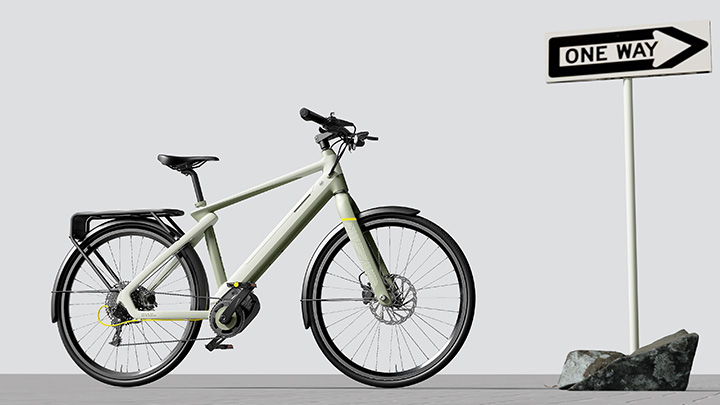How Safe Are Folding Electric Bicycles? A Comprehensive Analysis
Folding electric bicycles, or folding e-bikes, have become increasingly popular due to their convenience, portability, and versatility. They offer the benefits of traditional e-bikes with the added advantage of easy storage and transport. However, with their compact design and foldable mechanisms, potential buyers often wonder about the safety of these bikes. This article delves into the safety aspects of folding electric bicycles, exploring their design, structural integrity, and how to use them safely.
1. Design and Structural Integrity
- Frame Strength: Folding e-bikes are designed with robust frames, typically made from aluminum or steel, to ensure durability while maintaining a lightweight structure. The folding mechanism is reinforced to handle the stress of regular use, and high-quality models undergo rigorous testing to meet safety standards.
- Folding Mechanism: The hinges and locking systems in folding e-bikes are critical components. Manufacturers often use heavy-duty clamps and latches that securely lock the bike into place when unfolded. These mechanisms are engineered to withstand repeated folding and unfolding without compromising safety.
- Weight Distribution: Some riders are concerned about weight distribution and stability due to the smaller frame size. However, modern folding e-bikes are designed to distribute weight evenly, ensuring a stable ride even at higher speeds or on uneven terrain.

2. Battery and Electrical Safety
- Battery Placement: Folding e-bikes typically have their batteries integrated into the frame or positioned on the rear rack. This placement is carefully chosen to maintain balance and prevent the bike from tipping over.
- Electrical Components: High-quality folding e-bikes use reliable electrical components with built-in safeguards like overcharge protection, short circuit prevention, and thermal management systems to prevent overheating.
- Water Resistance: Many folding e-bikes are built with water-resistant components to handle various weather conditions. This ensures the electrical system remains safe even in light rain or wet environments.
3. Riding Stability and Control
- Wheel Size: Folding e-bikes often feature smaller wheels (16 to 20 inches) compared to standard bicycles. While smaller wheels may affect ride smoothness on rough terrain, they offer quick acceleration and agility in urban settings. Many folding e-bikes come with wider tires to enhance stability and grip.
- Suspension System: Some folding e-bikes are equipped with front or full suspension systems to absorb shocks and provide a smoother ride. This feature enhances safety by improving control and comfort, especially on bumpy roads.
- Braking System: Safety in any e-bike largely depends on its braking system. Folding e-bikes are often equipped with disc brakes, which provide reliable stopping power in various conditions. Some models may also feature regenerative braking, which adds an extra layer of control.
4. Safety Considerations for Use
- Proper Folding and Unfolding: Ensuring that the bike is fully unfolded and securely locked before riding is crucial. Riders should familiarize themselves with the folding mechanism and regularly check for any wear or looseness in the hinges and latches.
- Weight Capacity: Like any bicycle, folding e-bikes have a maximum weight limit. Exceeding this limit can strain the frame and folding mechanism, leading to potential safety hazards. It’s important to adhere to the manufacturer’s guidelines regarding rider weight and cargo.
- Visibility: Due to their smaller size, folding e-bikes can be less visible to other road users. Riders should equip their bikes with lights and reflectors and wear bright or reflective clothing to enhance visibility, especially in low-light conditions.
- Helmet Use: Wearing a helmet is essential for all cyclists, including those on folding e-bikes. A helmet can significantly reduce the risk of head injuries in the event of an accident.
5. Quality and Certification
- Brand and Model: The safety of a folding e-bike largely depends on its build quality. Reputable brands that adhere to international safety standards typically offer safer and more reliable products. Look for e-bikes that are certified by organizations like the European Union’s EN15194 standard or the US Consumer Product Safety Commission (CPSC).
- Maintenance: Regular maintenance is key to ensuring the continued safety of a folding e-bike. This includes checking the folding mechanism, brakes, tires, and electrical components for any signs of wear or damage.
Conclusion
Folding electric bicycles are generally safe when designed and used correctly. Their compact design does not inherently compromise safety, as long as the bike is made by a reputable manufacturer and maintained properly. Riders should always follow best practices, such as securing the folding mechanism before each ride, wearing a helmet, and adhering to the bike’s weight capacity. By considering these factors, you can enjoy the convenience and portability of a folding e-bike with confidence in its safety.




